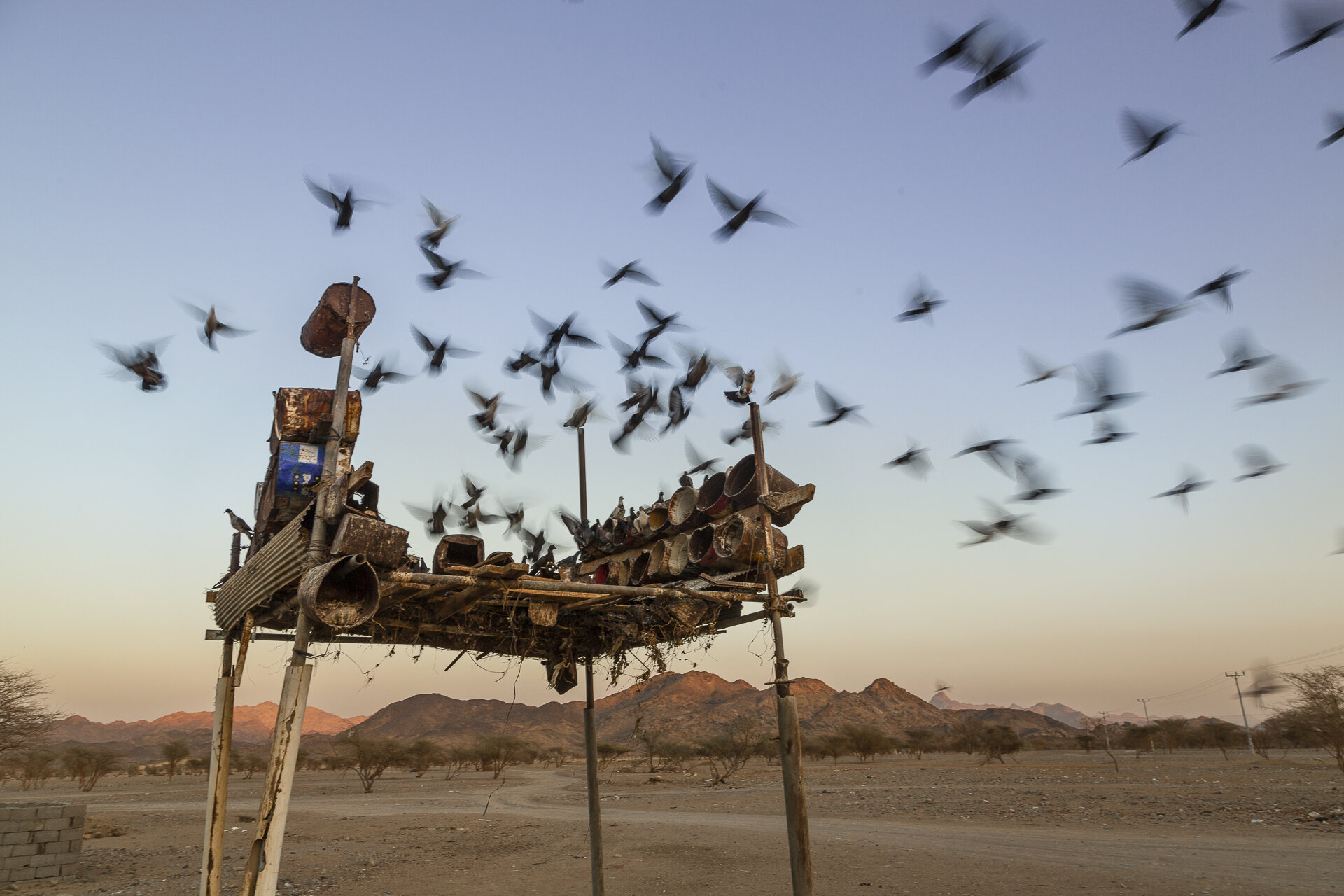
The Wells of Memory
Overland Through Memory, Across the Hejaz Desert, Saudi Arabia - Part II of the Out of Eden Walk
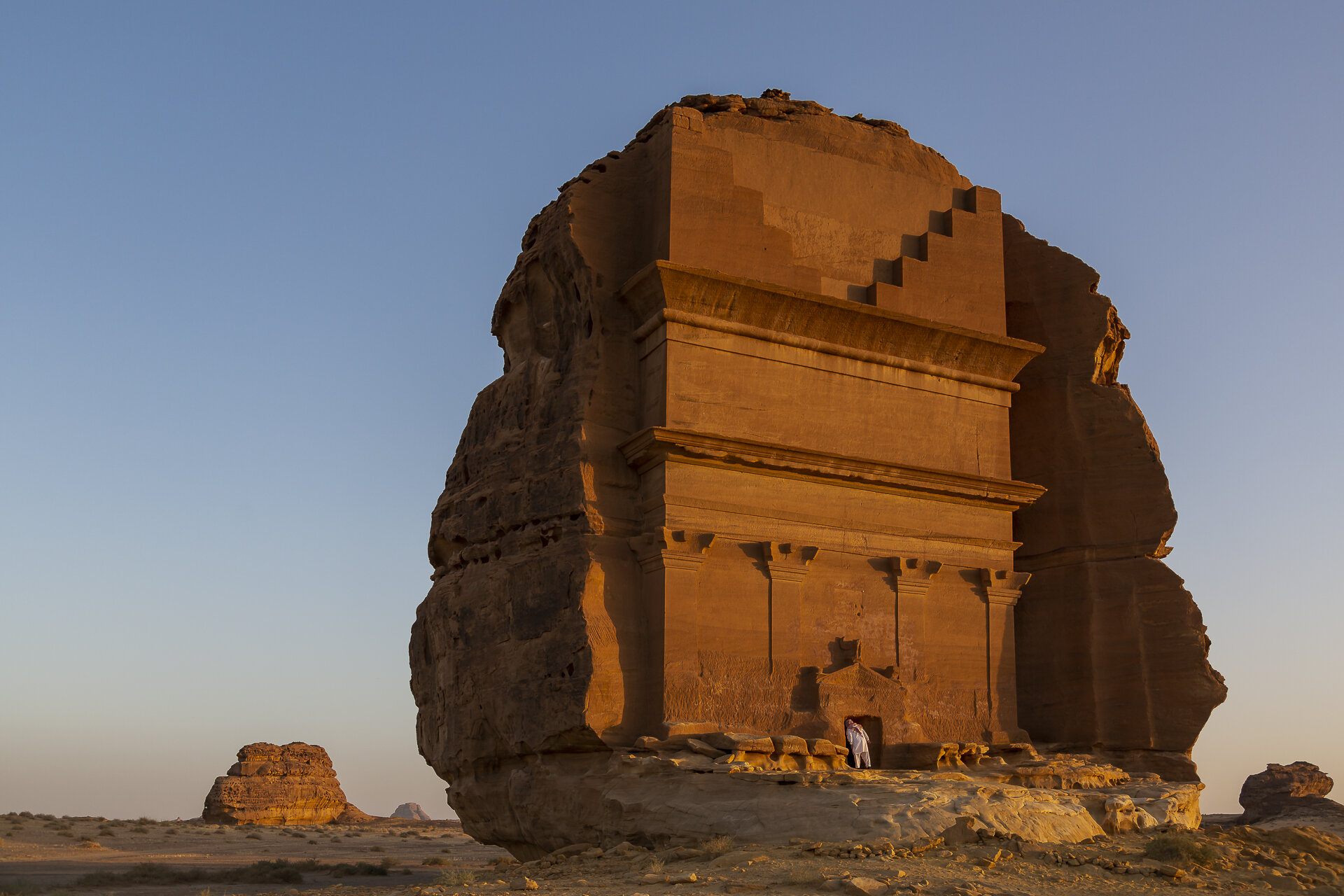
A pre-Islamic people, the historic Nebitean ruins of Madain Saleh, carved into sandstone mountains thousands of years ago. Each of these structures were used as tombs for the wealthy during the Nebitean era which stretched from Petra in Jordon then southward throughout most of the Hejaz region of present day Saudi Arabia.

Pigeons in Wasit, Saudi Arabia. From this point in the walk, the dirt road ends and nothing but desert until reaching Jordan.

Abdul Hameed Hiran and his family enjoy a Saturday afternoon along the Jeddah Corniche, a 30 km coastal resort area of the city of Jeddah located along the Red Sea, the only large city in the Hejaz in Saudi Arabia.
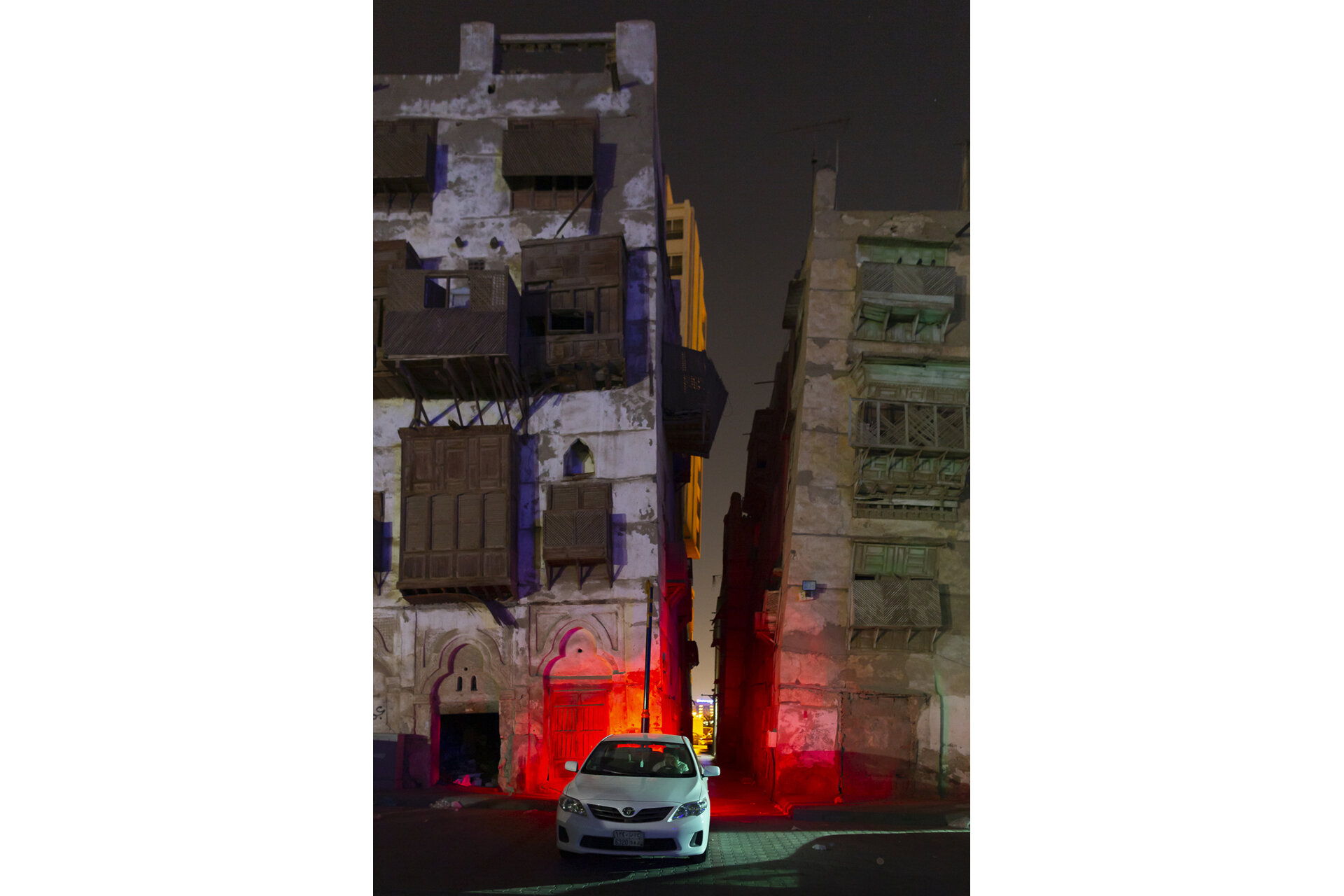
Old buildings in the Balad area of Jeddah, Saudi Arabia.
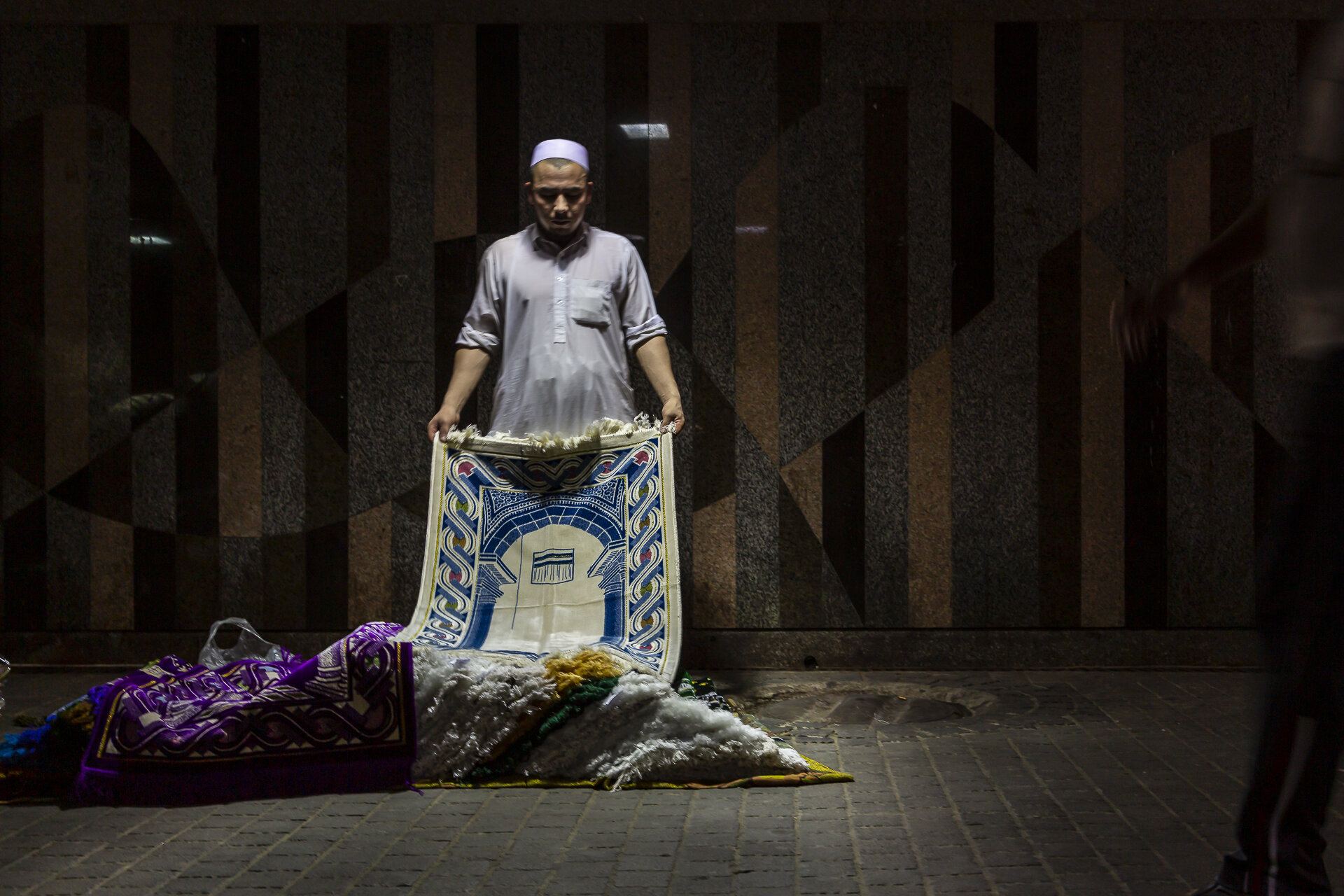
Morad Assaad Alah, 24, from Afghanistan, selling Islamic prayer rugs in an underpass walkway area in Jeddah, Saudi Arabia. Saudi Arabia has over 7.5 million foreign workers, many who leave their employers to work both legally and illegally in various parts of the kingdom.
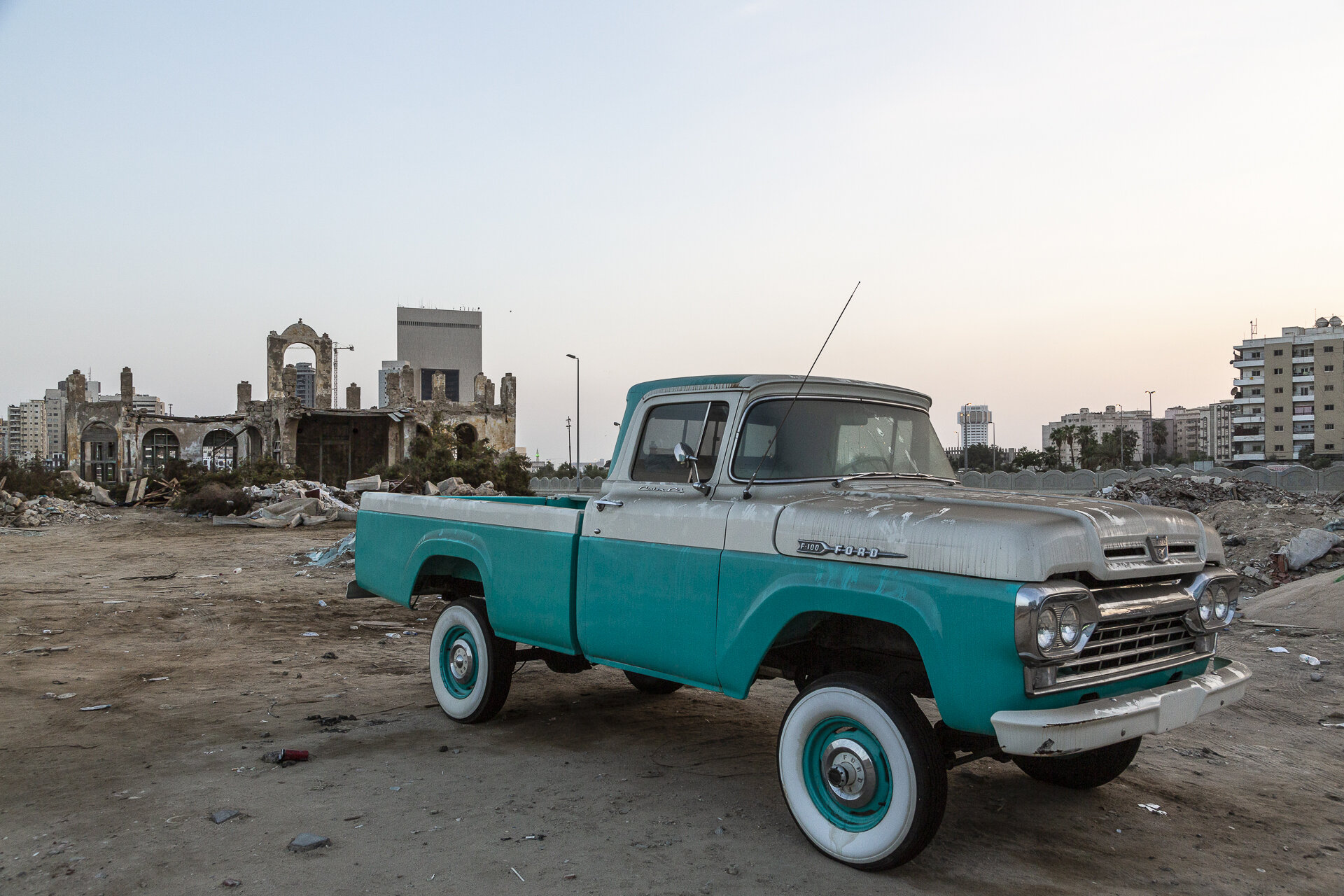
1960's Ford F-100 sits in front of the ruins of an old 17th-Century Dutch church located in Jeddah. Today, no other religion but Islam can be openly practiced in Saudi Arabia.
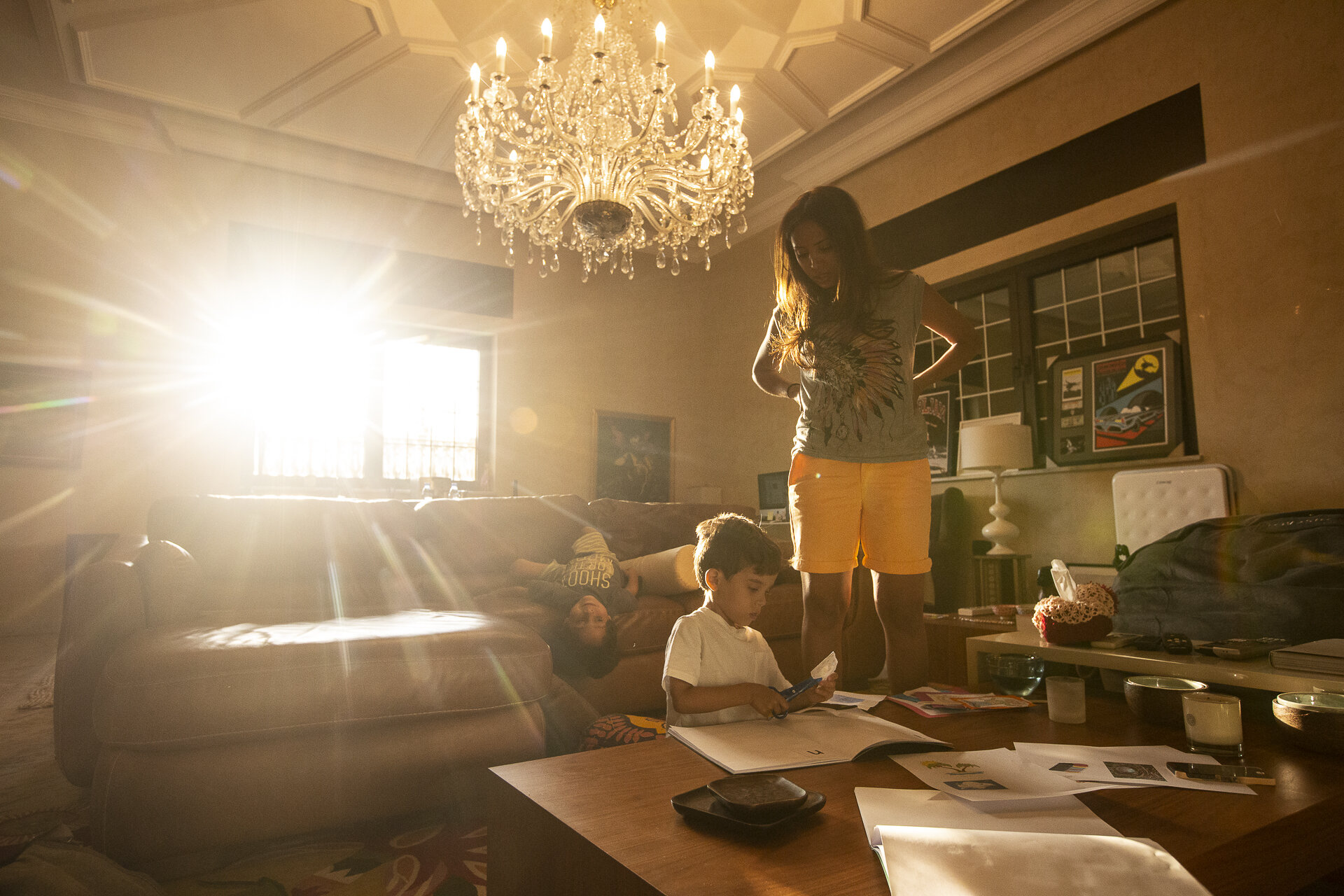
At her Jeddah home, single mom Yasmin Gahtani dresses casually to help her boys with homework. In public, even in one of the most liberal Saudi cities, she wears an abaya, or robe.
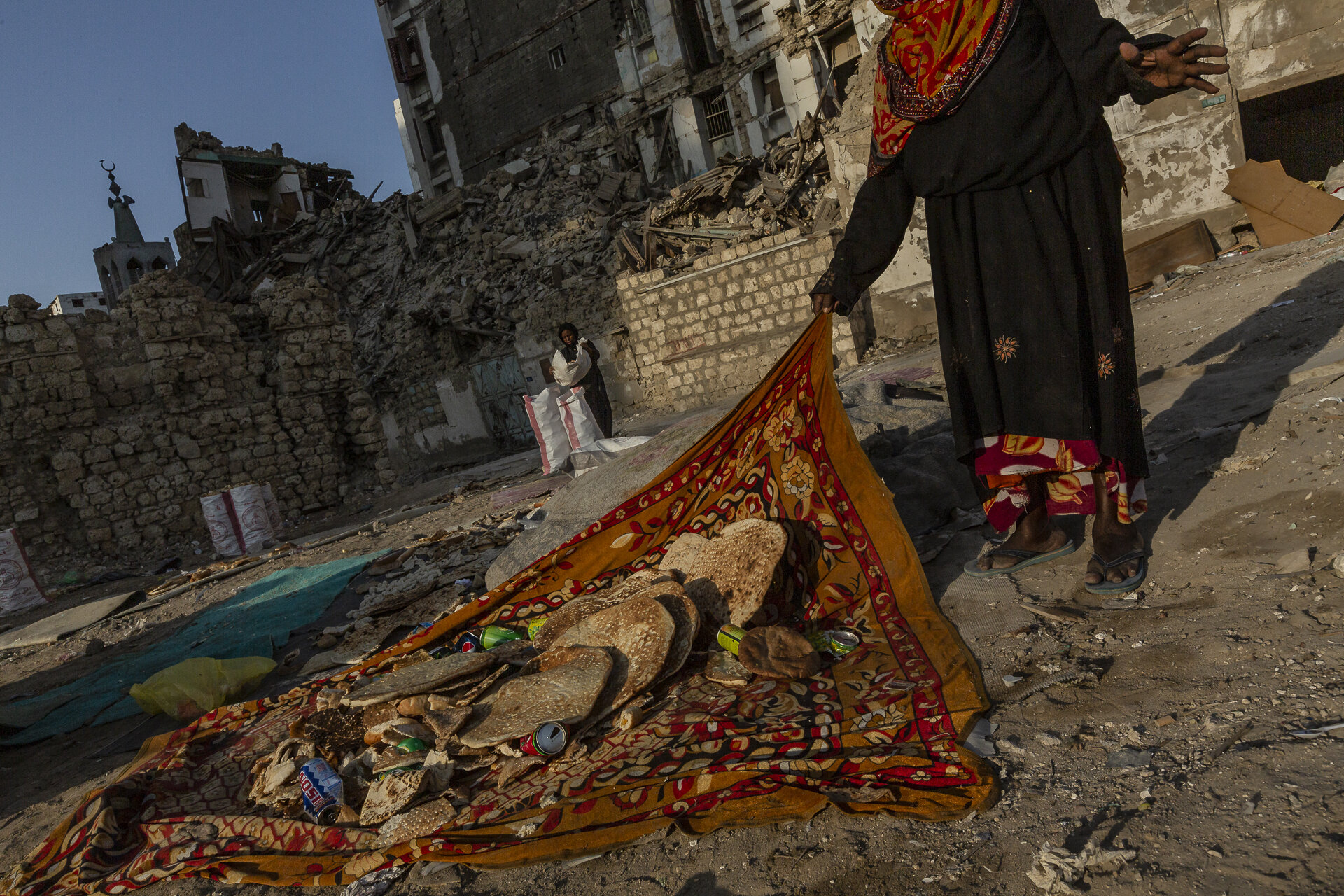
Somali women recycle cans and old bread in the historic Balad area of Jeddah, Saudi Arabia.
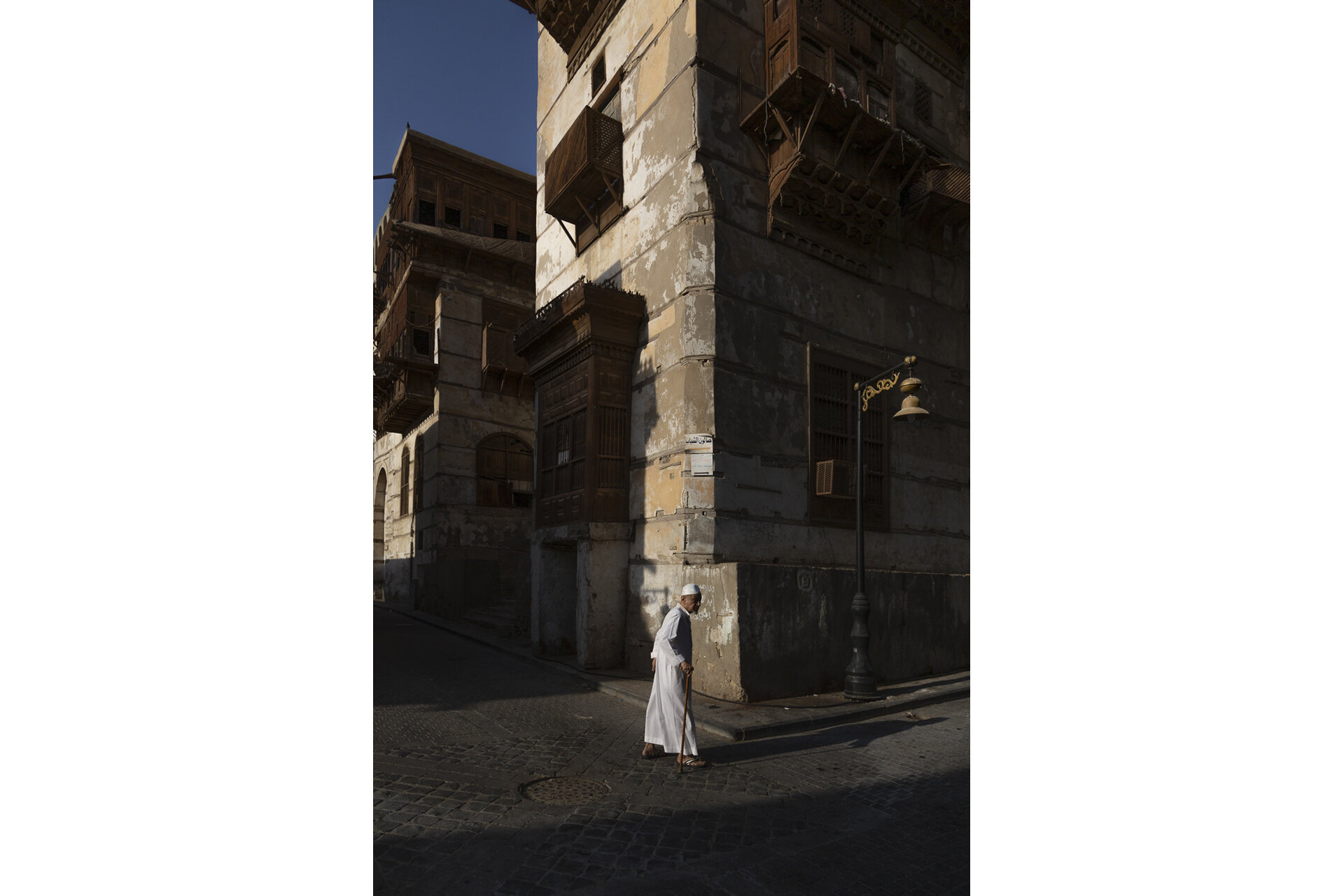
Balad area of Jeddah, Saudi Arabia.
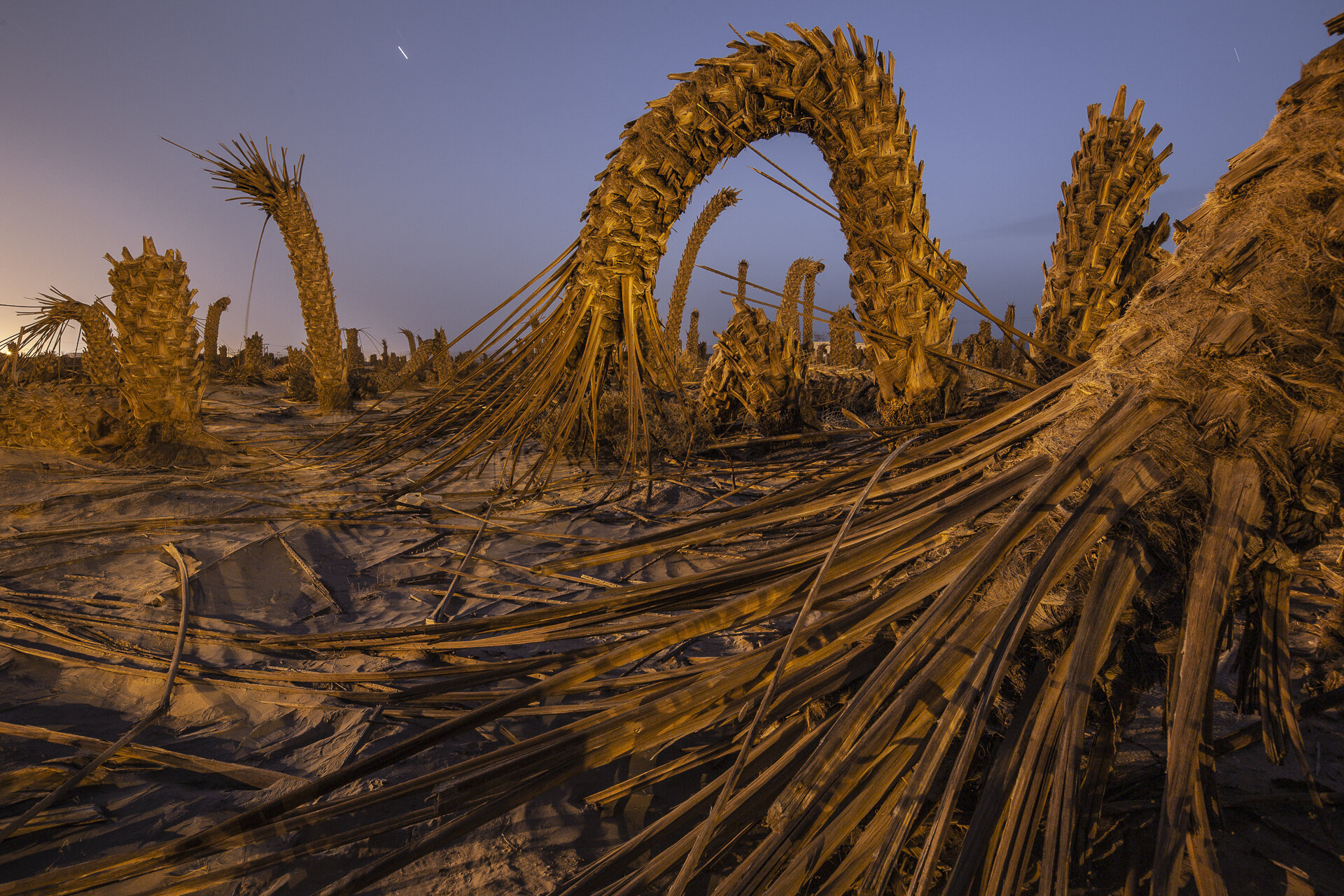
Dead date palms in Yanbu an Nakhl, where development in nearby coastal cities has sapped the water table.
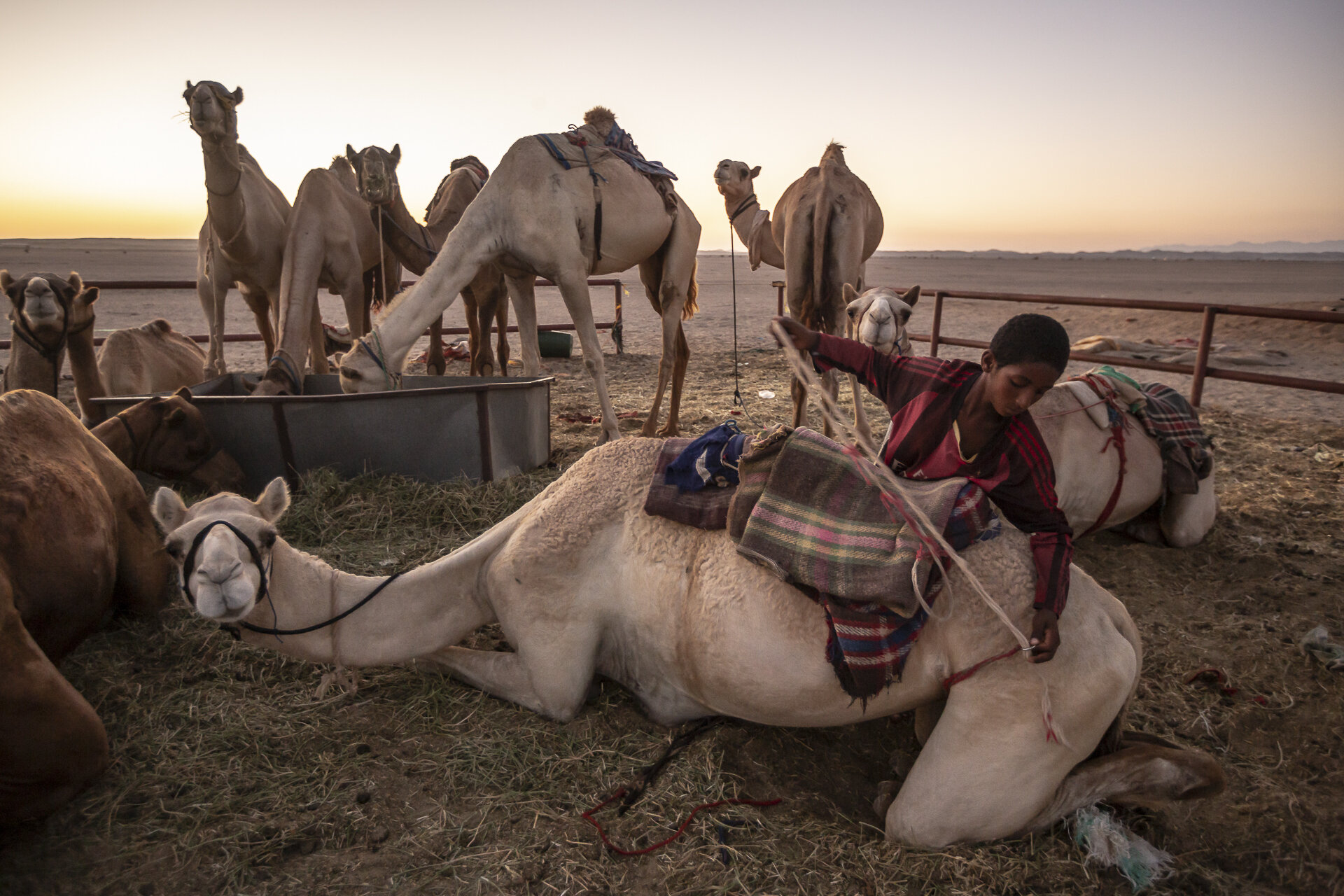
Abdullah, 12, from Mecca, tending camels after taking them for a walk in the desert outside Yanbu, Saudi Arabia. Wealthy camel owners primarily hire young boys to care for their herds.
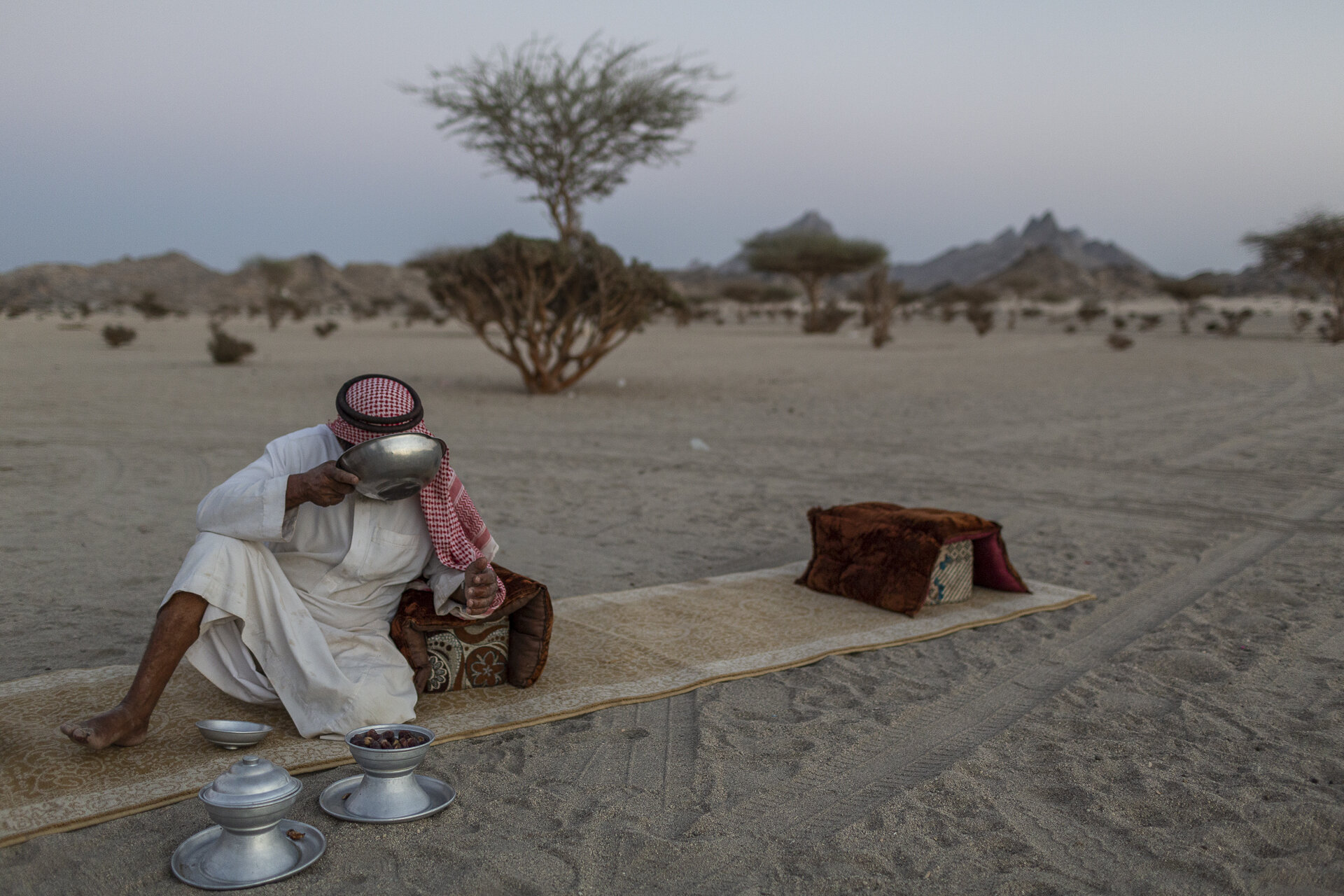
Rabah al rhafe, a Bedouin nomad, breaks his fast with goat milk and Saudi style bread at his families encampment in the desert near Yanbu, Saudi Arabia. Rabah al rhafe is also known as Abu Atiq. He has three wives and over 20 children.
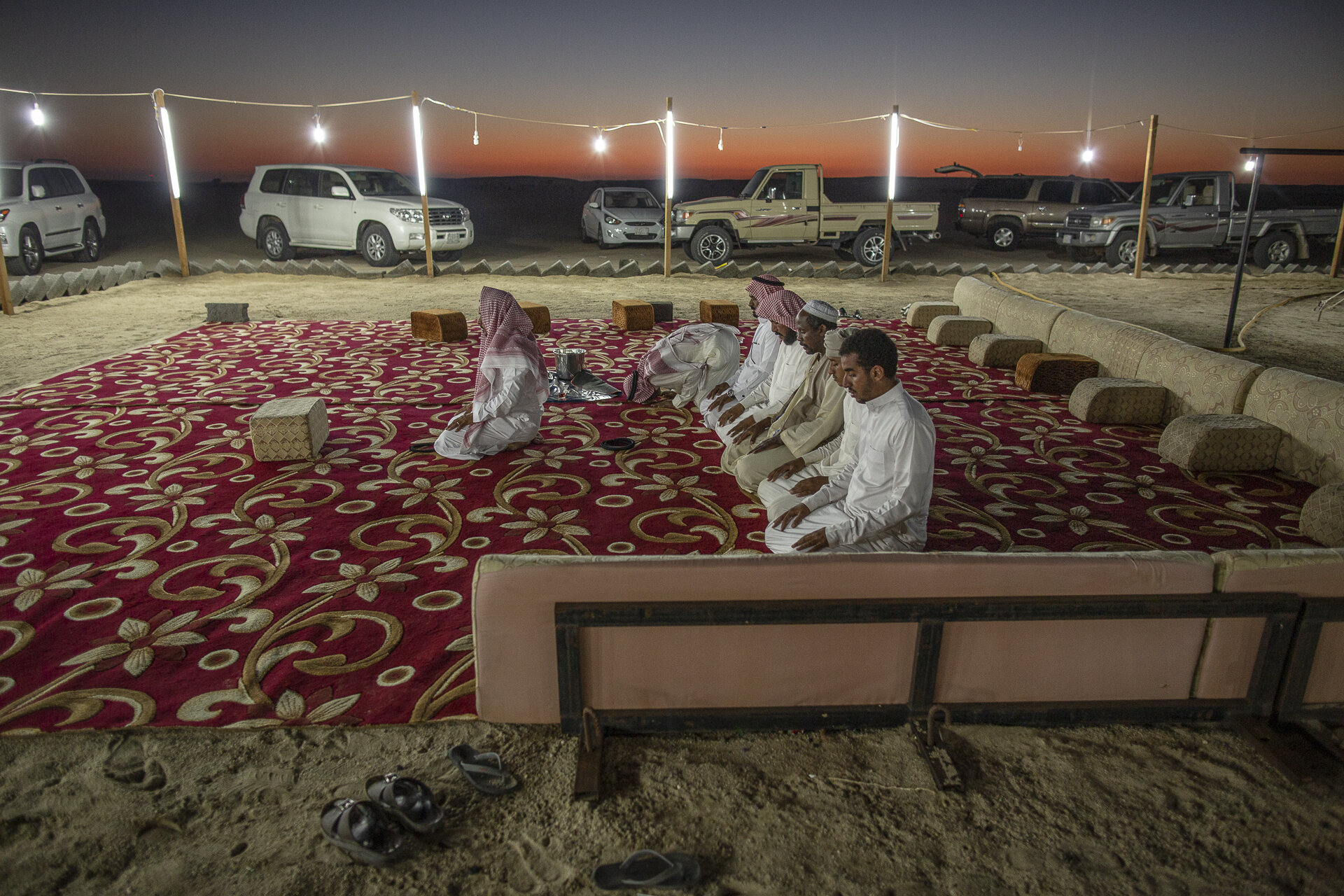
Weekend nomads, SUV-driving camel owners from Yanbu al Bahr pray at a deluxe desert camp. The vanishing ways of Bedouin herders maintain a grip on nostalgic Saudi city dwellers.
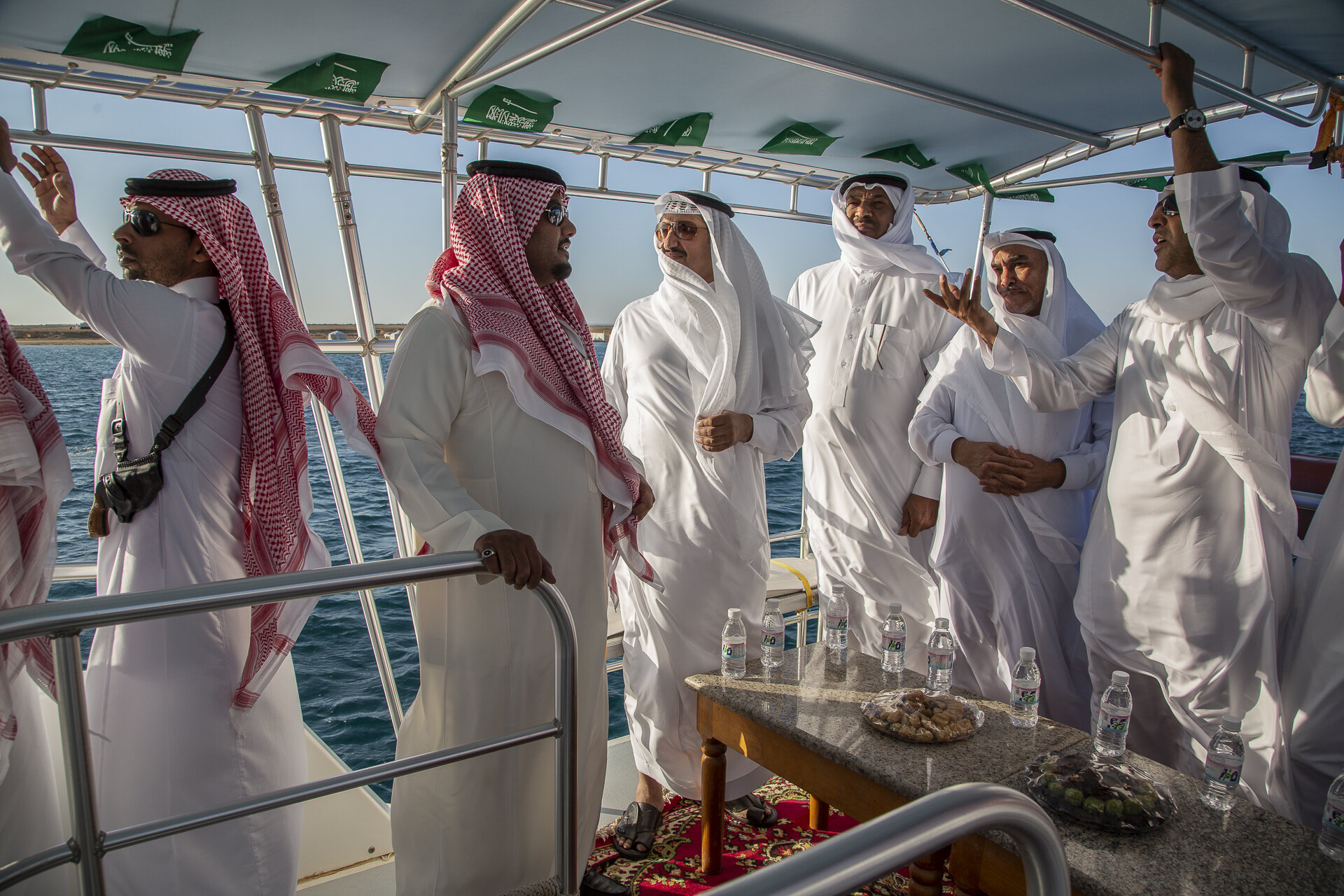
As an armed guard keeps watch, Governor Mosaad Al-Saleem (right) entertains guests during a regatta near the Red Sea port city of Yanbu al Bahr, much of it built in the 1970s.
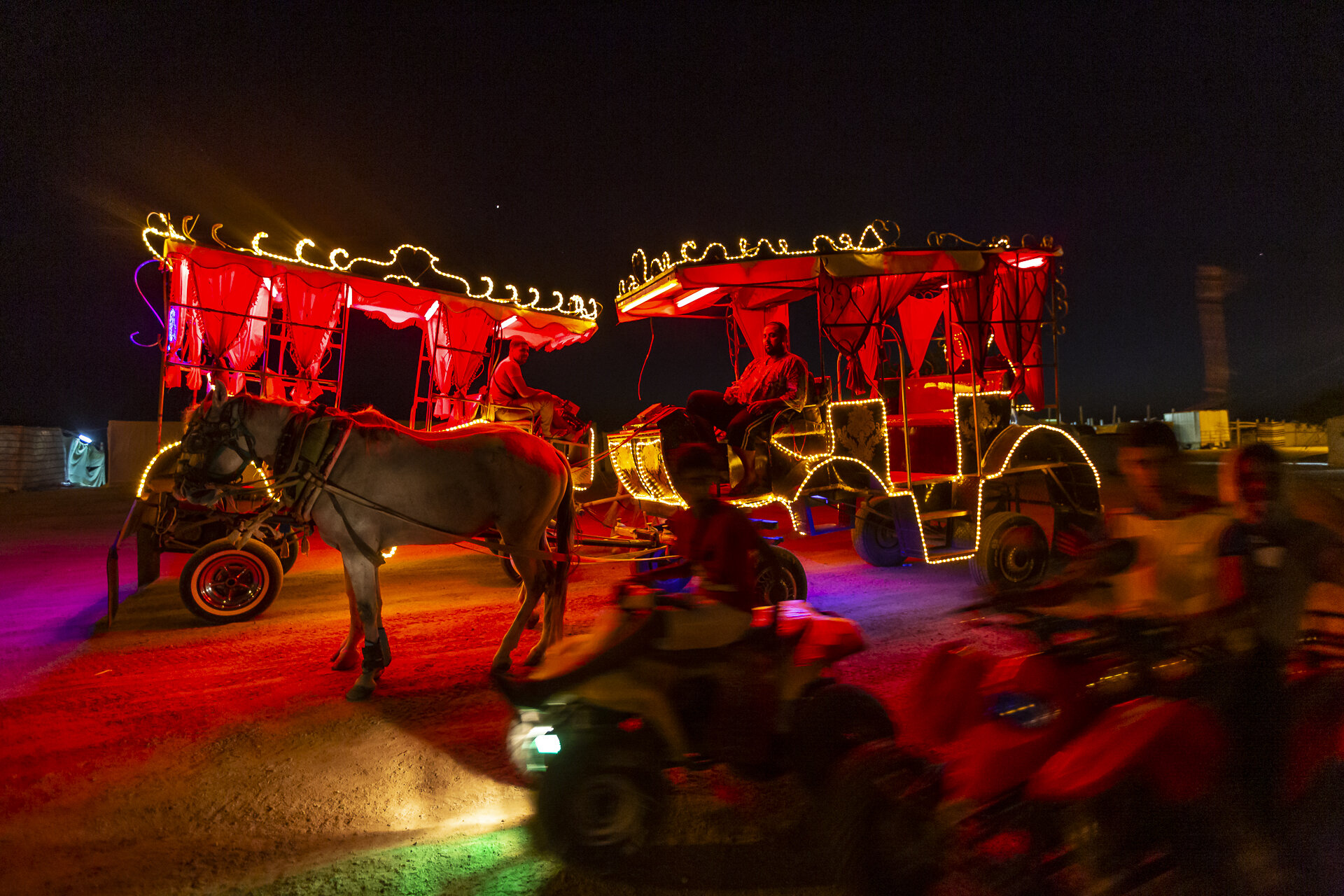
Racing boys on ATV's pass brightly colored horse and carriages await customers along the beach in Yanbu. Saudi Arabia.
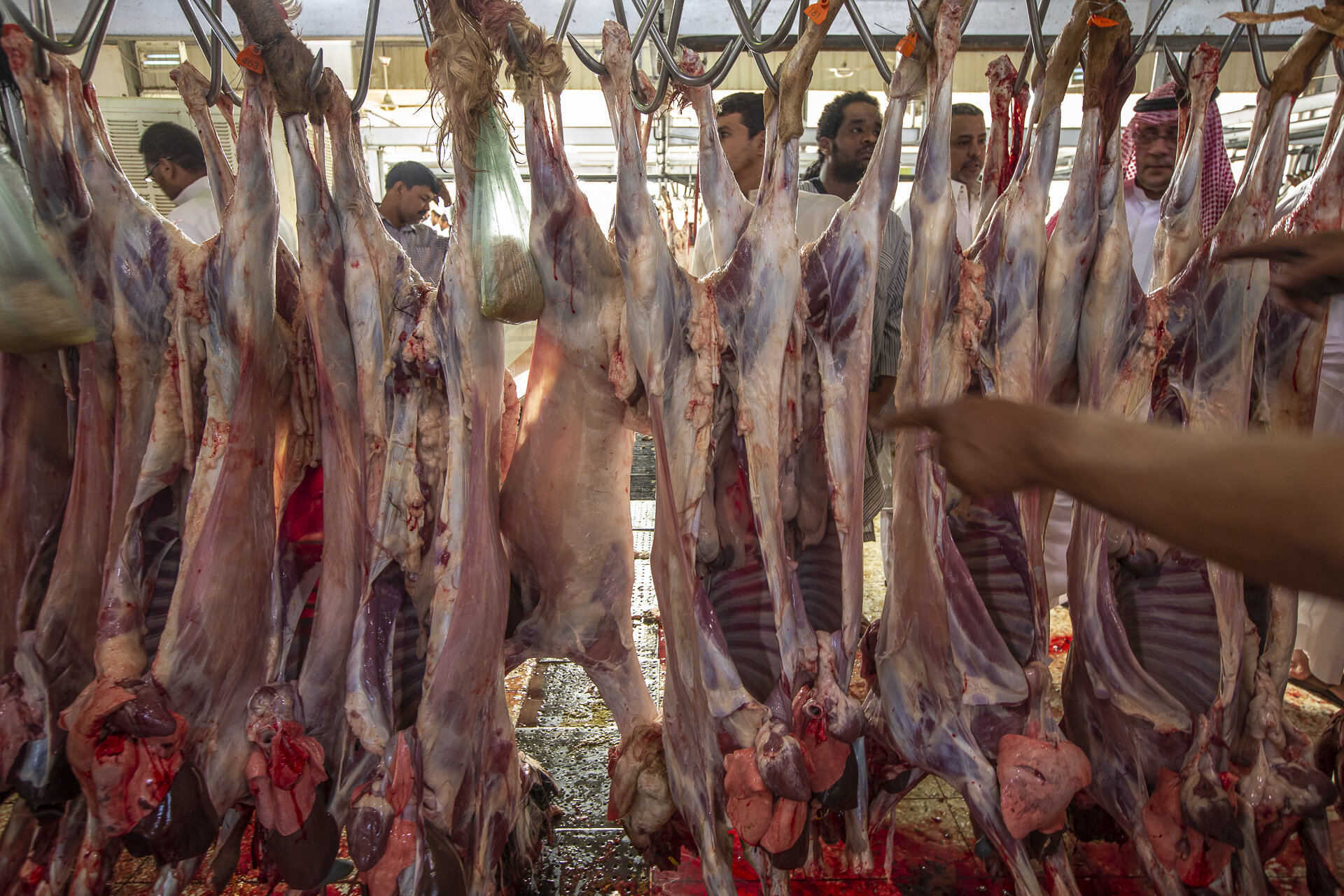
Thousands of goats being slaughtered for Eid al-Adha or Feast of the Sacrifice at a slaughterhouse in Yanbu. Eid al-Adha honors the willingness of Abraham (Ibrahim) to sacrifice his young first-born son Ishmael (Ismail) as an act of submission to God's command and his son's acceptance to being sacrificed, before God intervened to provide Abraham with a lamb to sacrifice instead.

Harabi performance, a 100 year old transitional dance to celebrate peace but also a dance to prepare for war, held in Yanbu Al Nahkal, Saudi Arabia. This day in 2013 it was performed for those who could not make it to Haj in Mecca.

For a young Saudi man with a degree but no job, the corniche in Al Wajh is a playground at dusk for pulling wheelies on his motorbike.
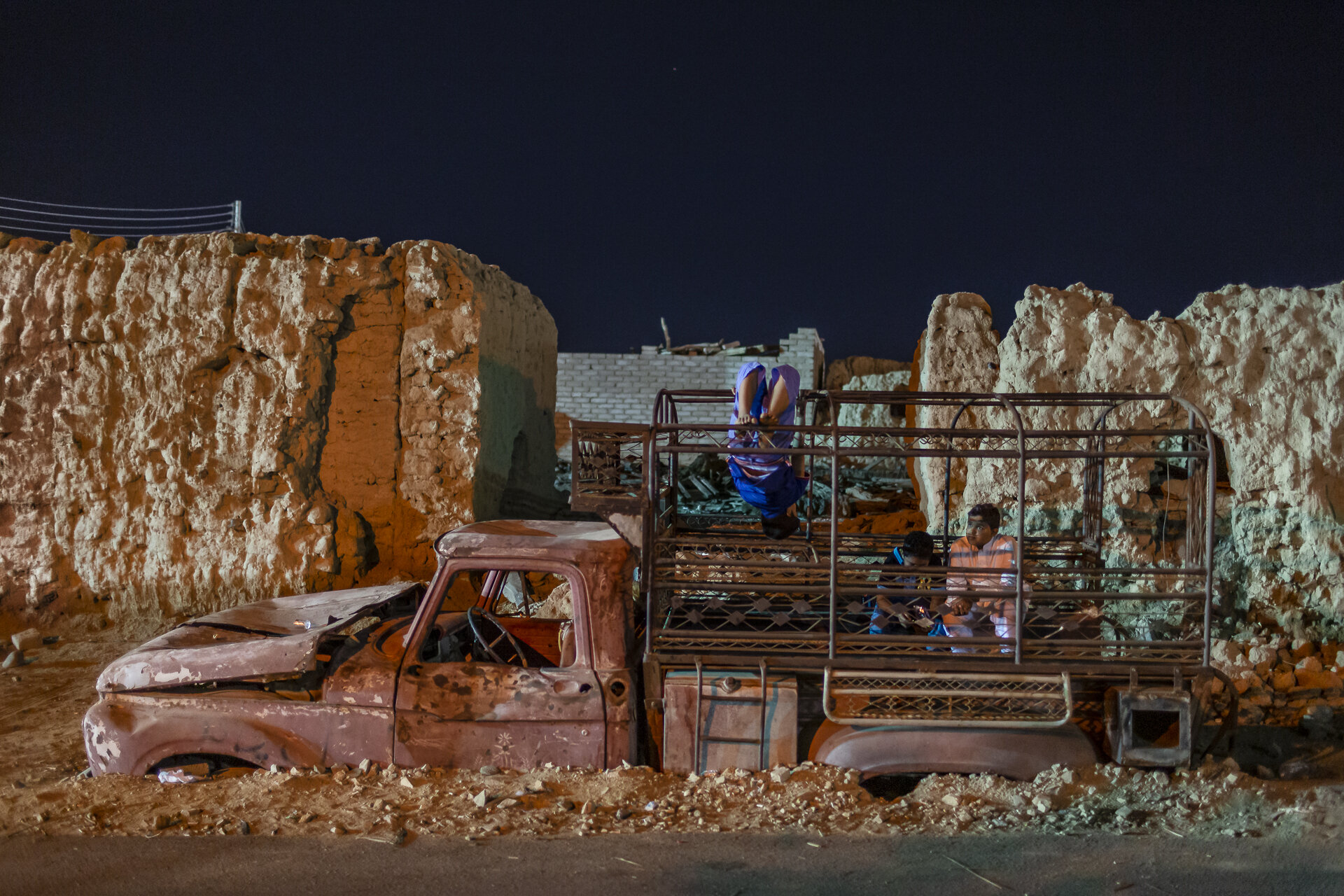
Children play among the remains of a truck left in ruins in front of old Bedouin homes in Yanbu Al-Nakhal, Saudi Arabia.
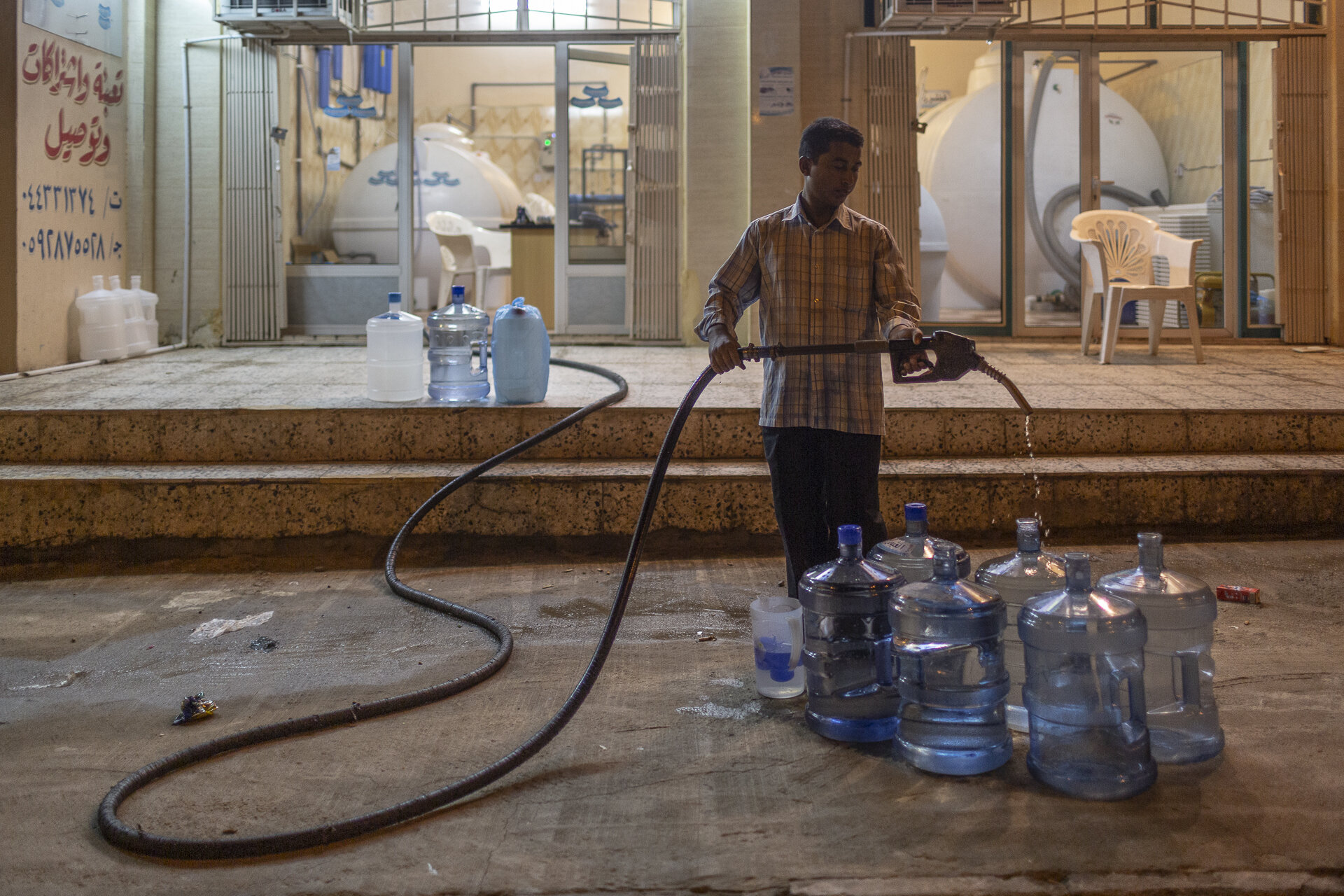
Water is precious in Duba, and Adbulmoeen Ali Huseen, a worker from Bangladeshi, watches not to spill any drops while filling jugs using a dispenser normally seen at gas stations. While oil is plenty in Saudi Arabia, water is trucked from wells as far as 100 miles away and then purified.
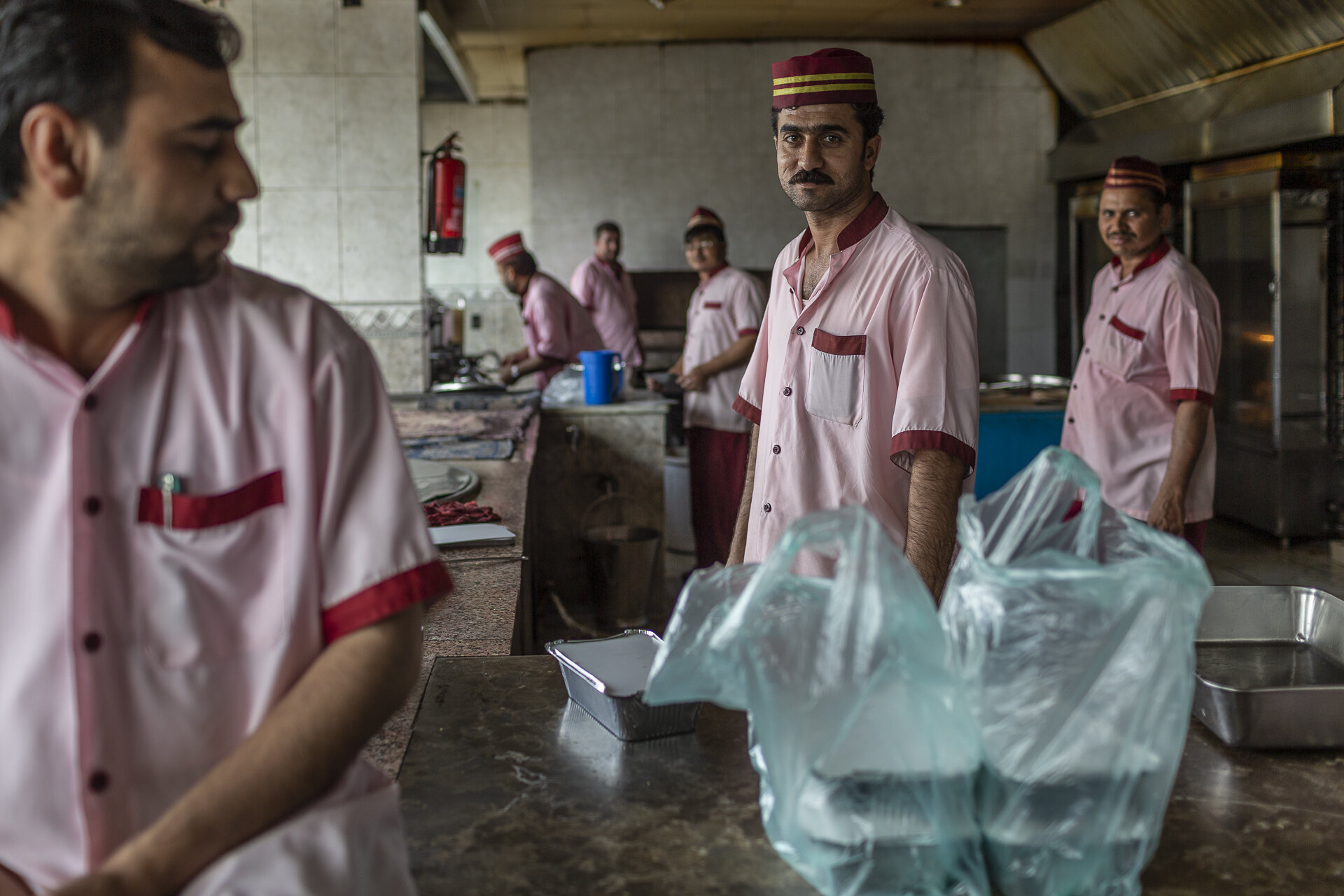
Foreign workers make up nearly all service sector jobs in Saudi Arabia, such as these workers employed at the Al'Ula Restaurant in Al Ula, Saudi Arabia, hailing from Pakistan, Egypt, Syria, and Afghanistan.
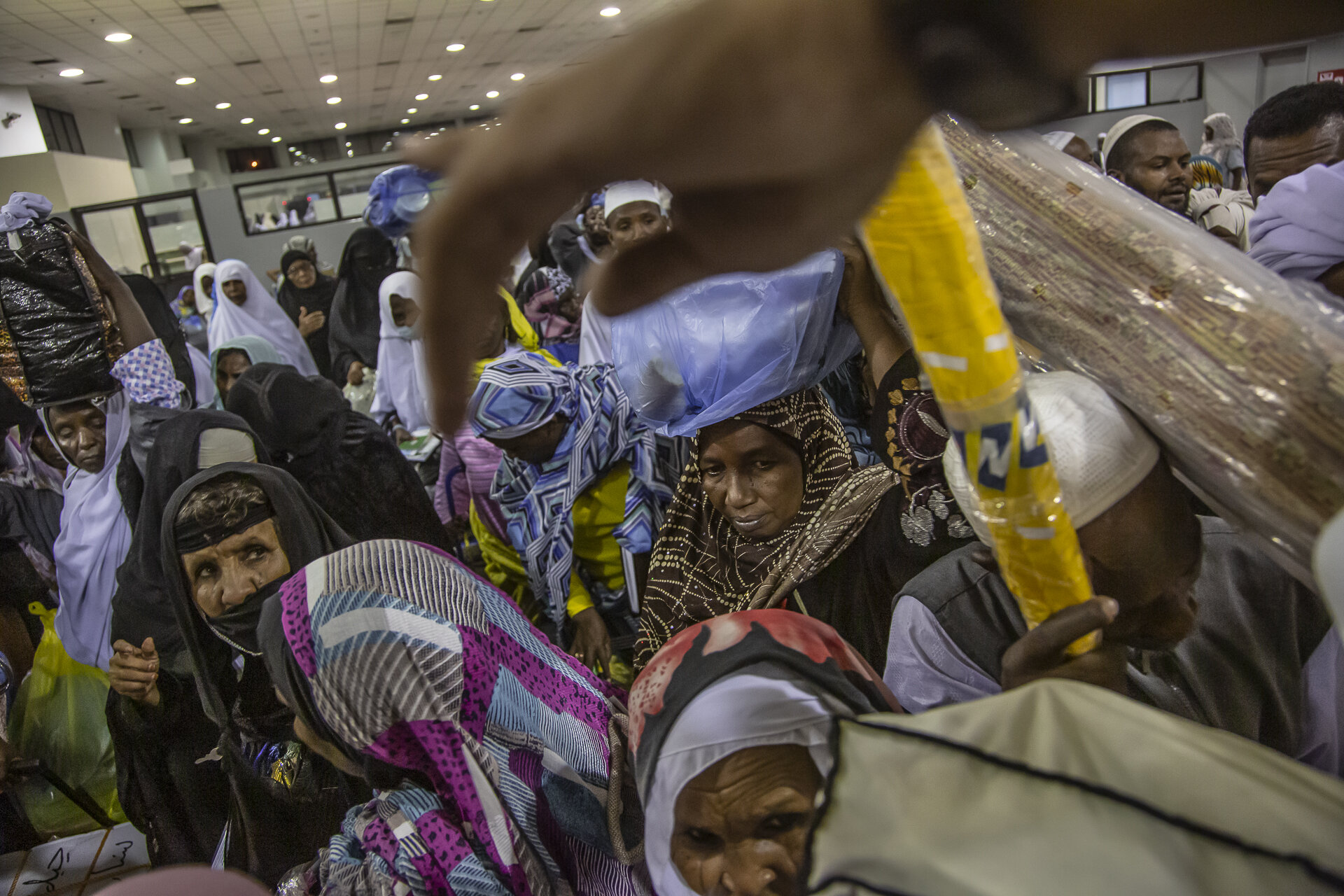
Hundreds of Sudanese women and men clamor to get through immigration at the Jeddah Islamic Port terminal to leave Saudi Arabia after visiting Mecca. This port is the main sea terminal for all pilgrims visiting Mecca for Haj.
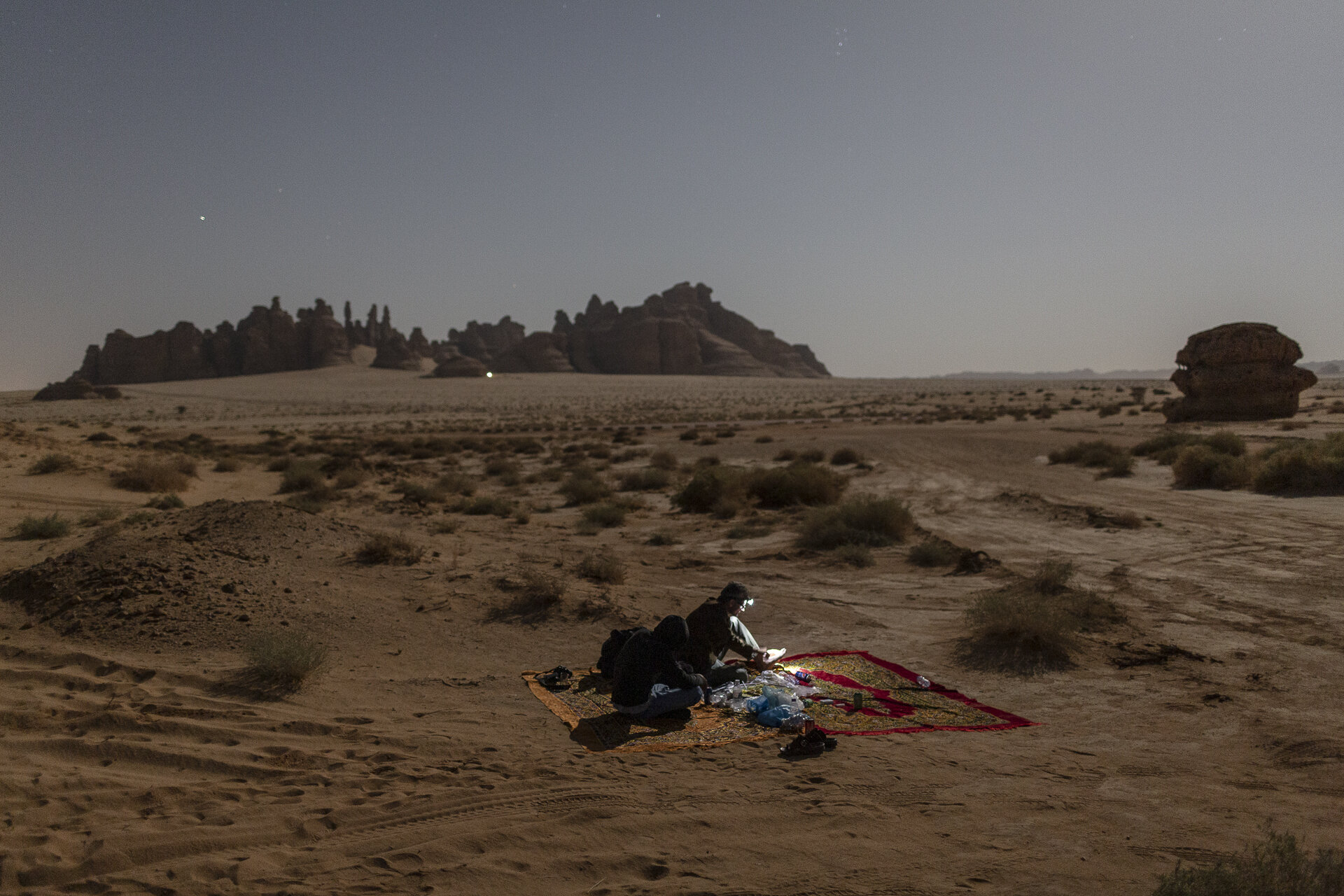
Surrounded by the ghosts of travelers who came before him, writer and National Geographic Explorer, Paul Salopek, reads with a head torch amid 2,000-year-old Nabataean tombs before going to sleep on a blanket in the desert at Madain Salih.

A cluster of eroded sandstone hills known as the Dancing Ladies located in Madain Saleh, Saudi Arabia,
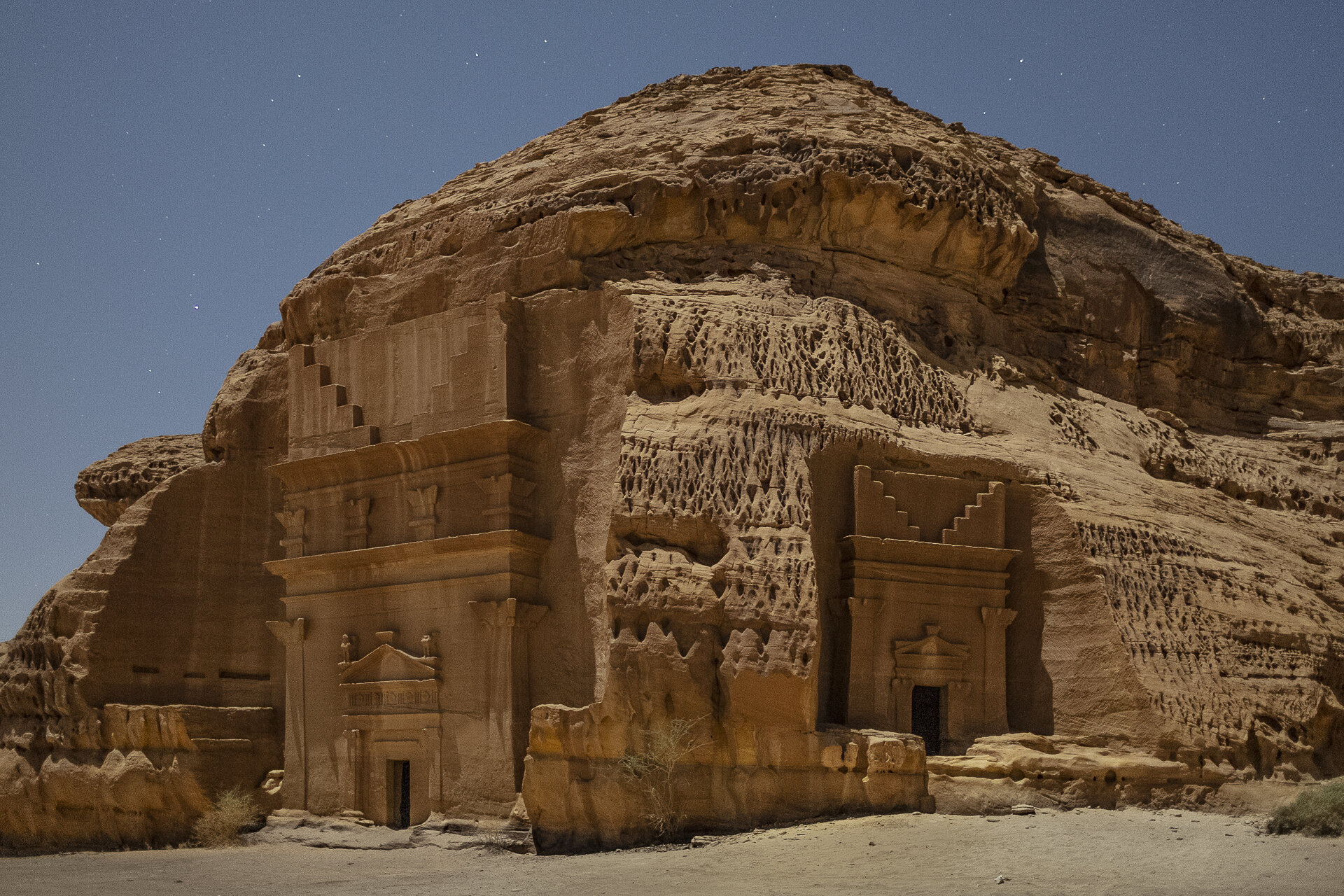
Under the moonlight, the historic Nebitean ruins of Madain Saleh, carved into sandstone mountains thousands of years ago. Each of these historical structures was used as tombs for the wealthy during the Nebitean era which stretched from Petra in Jordon then southward throughout most of the Hejaz region of present-day Saudi Arabia.
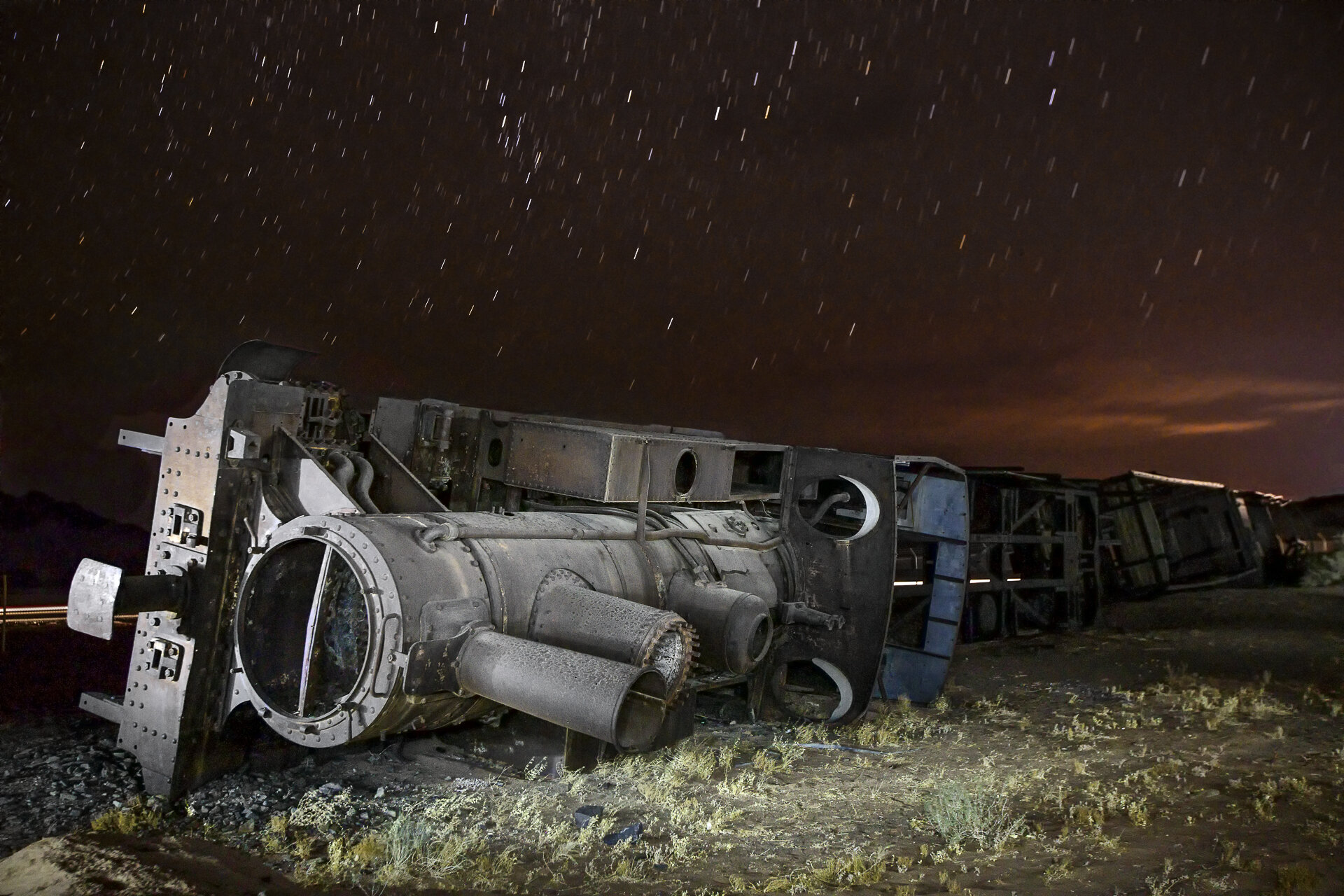
Resting more than 100 years later in the remote deserts of Saudi Arabia, a fallen locomotive once pulled pilgrims on the Hejaz Railway, built by Ottoman Turks. Tribesmen led by Lawrence of Arabia regularly attacked Hejaz trains during World War I.
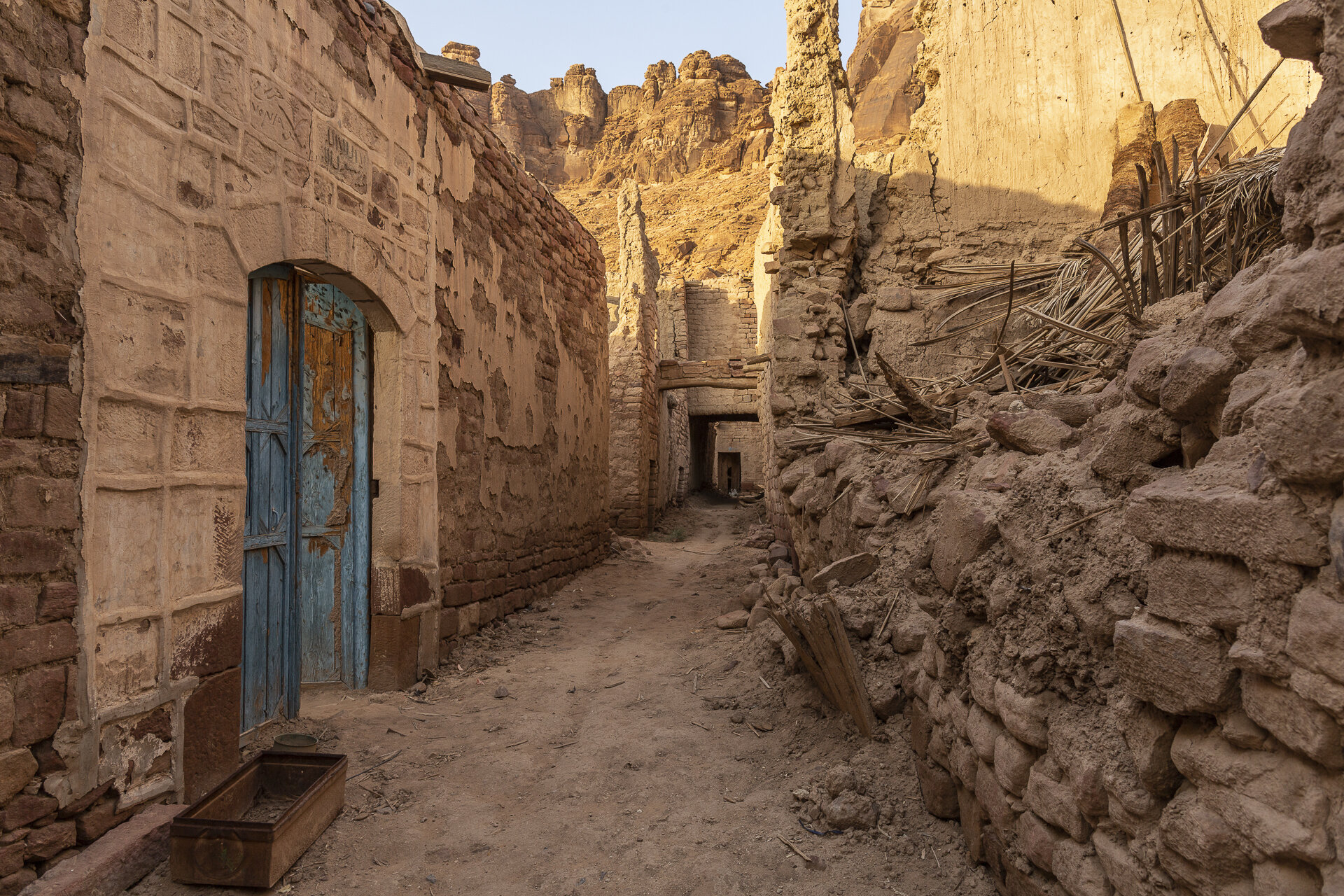
The Old City of Al'Ula, build in the 13th century with many of its structures still remaining. Al-`Ula was once a major settlement of the region facilitating trade and the movement of people to and from Mecca. The last family is said to have left in 1983, while the last service in the old mosque was held in 1985.
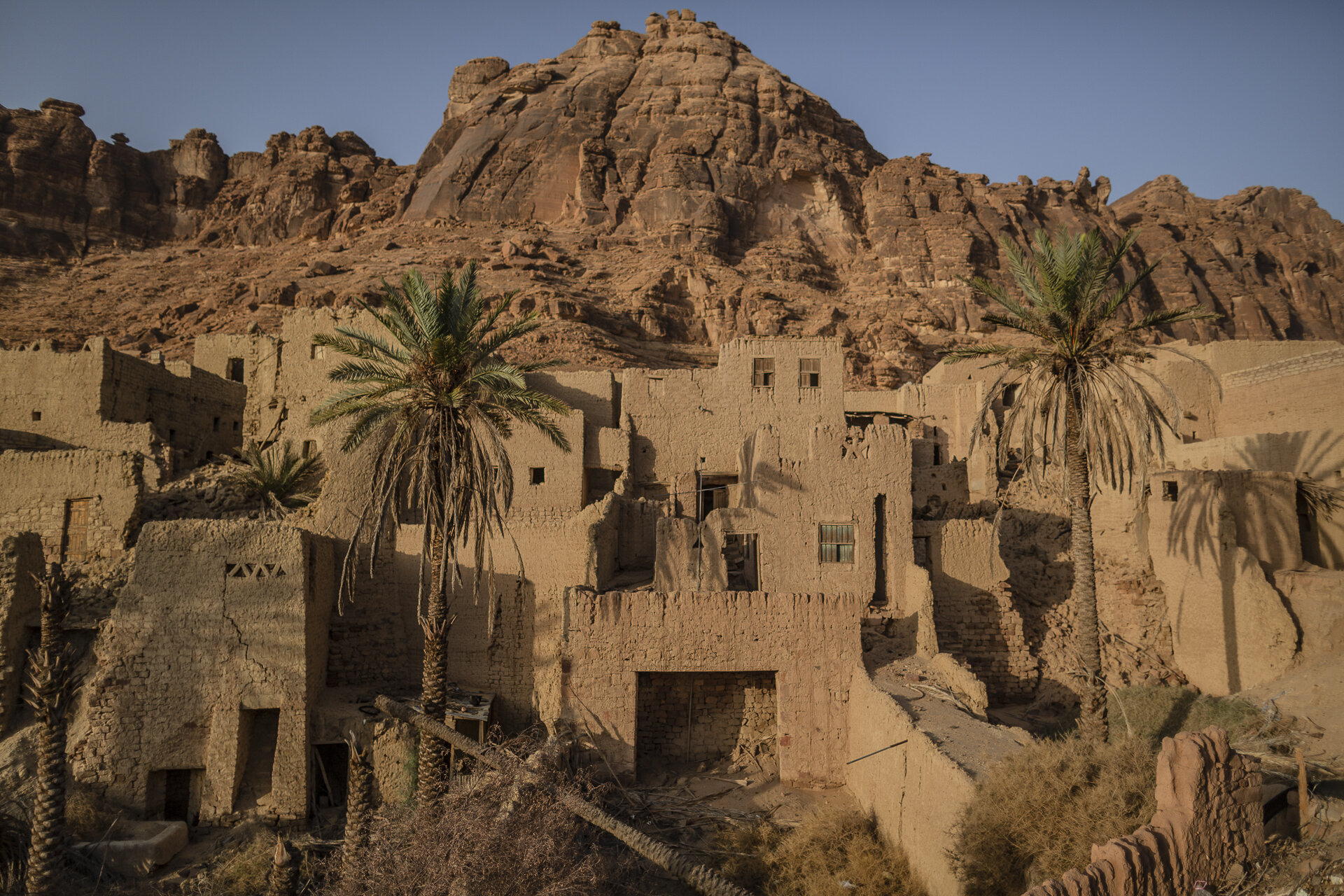
The medieval town city of Al'Ula, build in the 13th century, is believed to be the site of the old Dedanite and Lihyanite of the Lihyan kingdom dating back to the 7th century BC.

Vastness of Al'Ula, build in the 13th century with many of its structures still remaining. In the 20th century, a new town center was established beside the old town, and eventually, the people left Al'Ula.
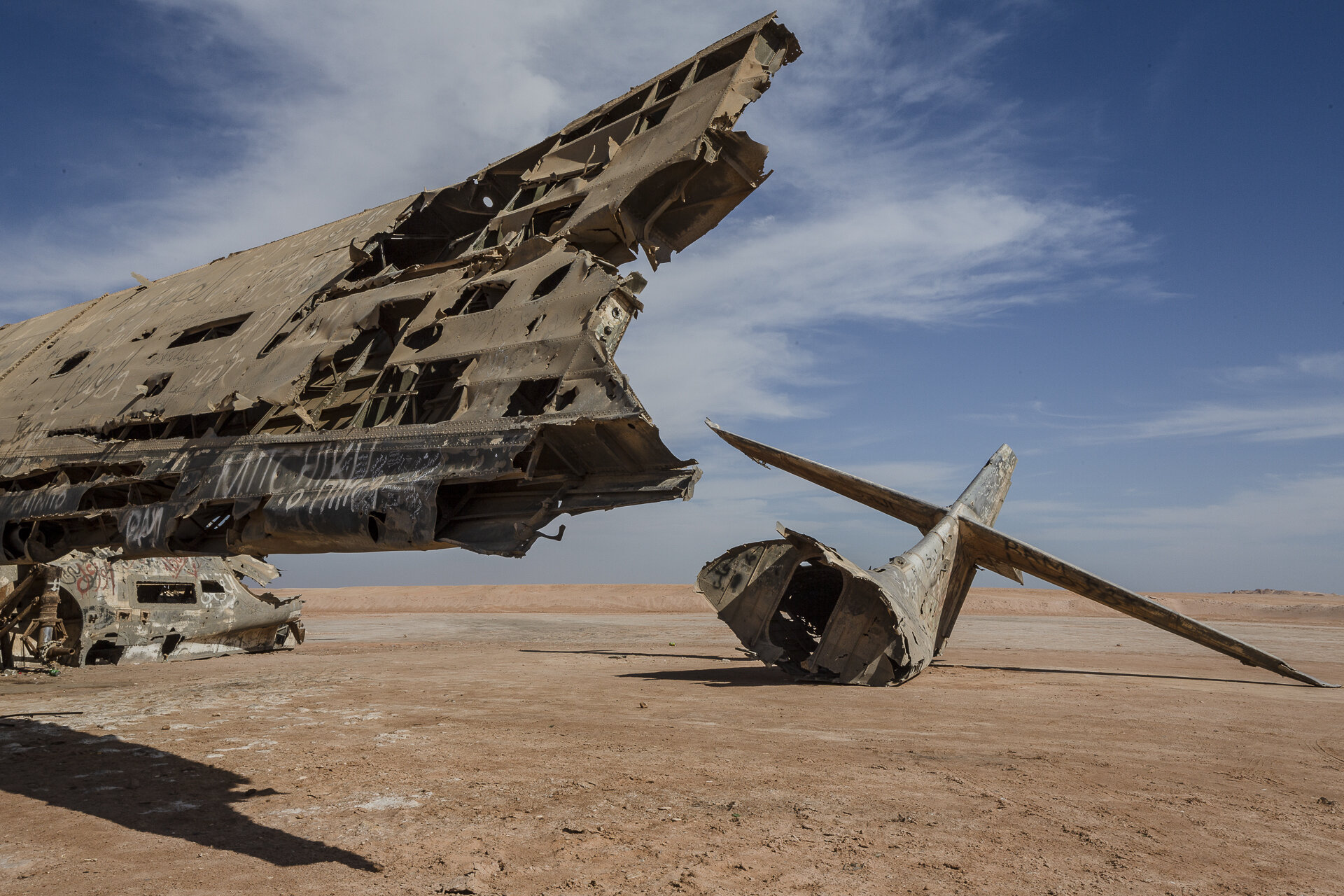
Remains of a Catalina aircraft, abandoned on the beach at Ra's Ash Shaykh Humayd, Saudi Arabia, after an attack by Bedouins in March 1960.
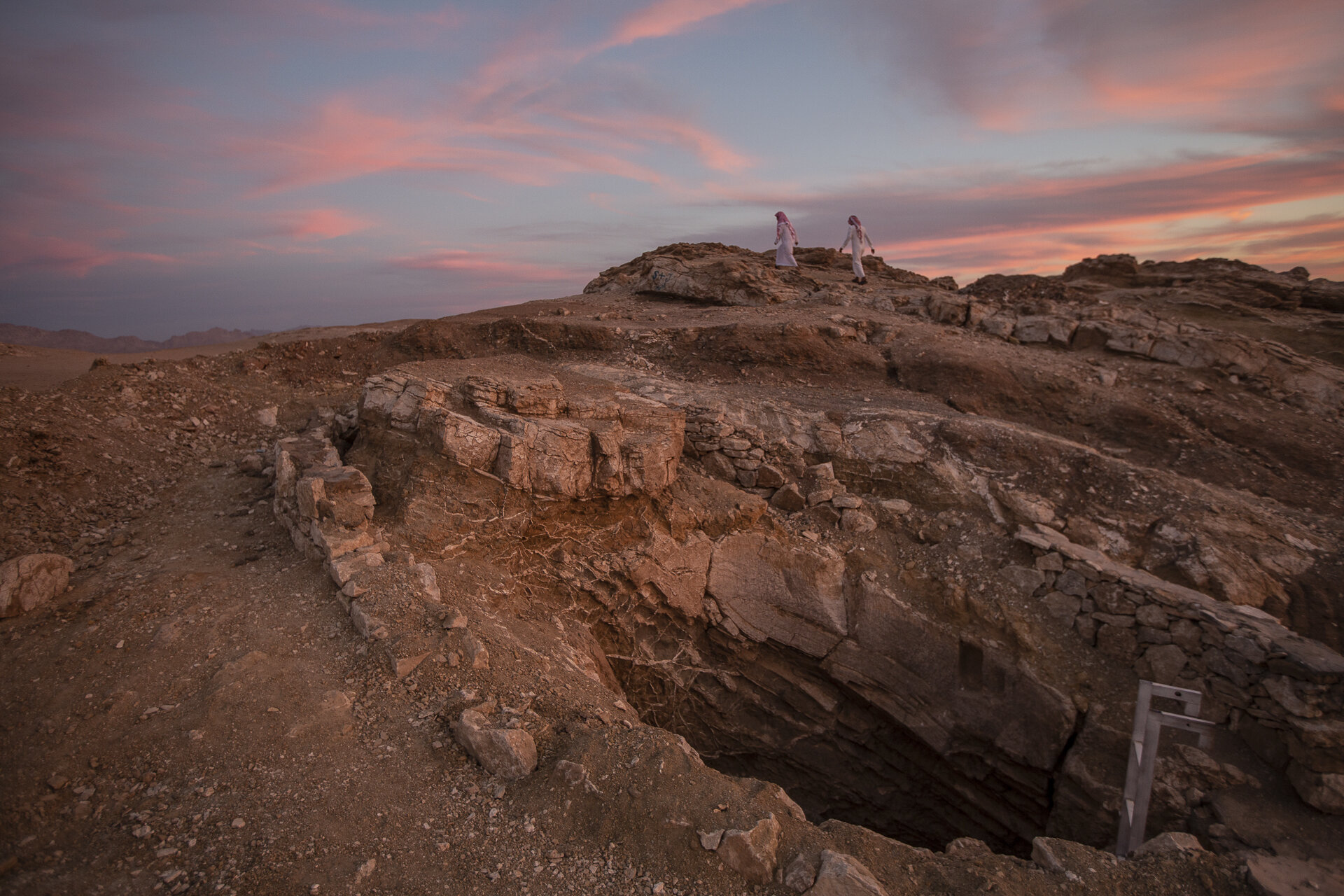
For centuries a well at the Al Bad oasis nourished camel caravans and religious travelers. It is now a dry hole. Folklore says that Moses watered his sheep here.